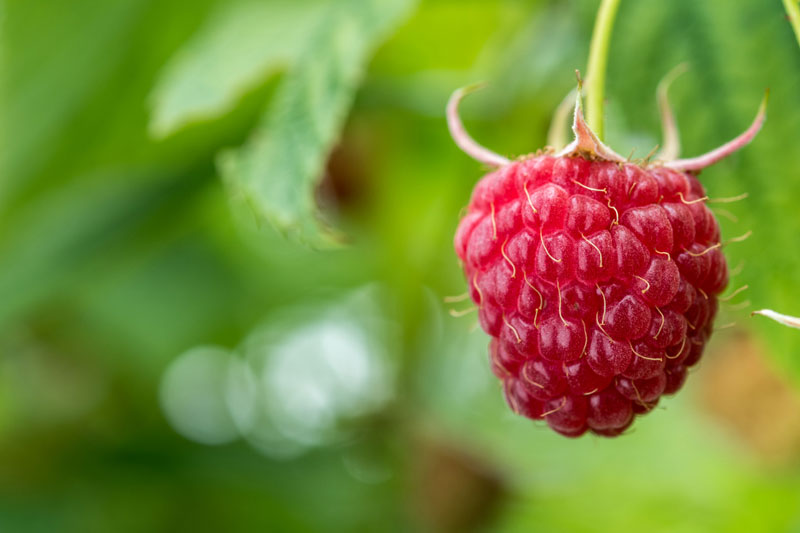
Raspberries are among the list of fruits to plant in February. Keep reading for more options.
Winter is necessary for a variety of plants. The colder weather provides for winter stratification, vernalization, and chilling hours.
Let’s start with winter stratification. This action is important to many of our wildflowers. Some seeds are in an embryonic dormancy; as babies, they sleep until awakened. The cold and damp of winter awakens these seeds. The moisture and cold soften the shells to break their dormancy, informing the seeds it’s time to germinate.
[image id="23316" title="Luedecke" linkto="file" ] Bill Luedecke and daughter Martelle offer advice to Highland Lakes gardeners.Vernalization is another sleep-time story. For instance, bulbs use three different seasons for growth. In the warm/hot season, flower bulbs are formed. When the weather cools in fall, root growth is accelerated. In the wintertime, however, during vernalization, the stems lengthen and extend. If bulbs miss these three growth spurts, the result may well be clumps of dwarfed flowers.
Third, chilling hours, is an imperative stage for fruit trees. Certain fruits require a different number of chilling hours. When the cool temperatures arrive, fruit trees go dormant, which protects the buds and foliage from damage. Oddly, this signal is hormonal. Yes, trees have hormones. Once the tree has acquired its personal chilling hours for that species, the dormancy breaks and the buds are ready to grow.
Nature continues to work even in its sleep.
TO-DO LIST FOR FEBRUARY
1. February is one of the best months for planting trees, shrubs, ground cover, perennials, and vines.
2. Veggies to plant: artichokes, asparagus, onions, greens, lettuce, spinach, radish, carrots, beets, bok choy, collards, kales, peas, turnips, leeks, broccoli, shallot bulbs, cabbage, potatoes, Brussel sprouts, cauliflower, celery, English peas, Swiss chard.
3. Tasty herbs to plant at this time: calendula, chervil, cilantro, chives, dill, parsley, feverfew, oregano, sorrel, thyme, garlic, chives. If/when the weather drops below freezing, protect your chives and cilantro.
4. February fruit plants from which to choose: apples, peaches, pecans, pears, pomegranates, persimmons, figs, almonds, grapes, strawberries, raspberries, blackberries.
5. Did you sharpen your pruning tools? Prune dormant perennials, rosemary, oregano, and roses. Next time, we’ll cover how to prune your fruit trees.
6. Pretties to plant: alyssum, calendulas, cannas, daylilies, daisies, gladiolas, poppies, larkspur, pansies, petunias, pinks, primrose, snapdragons.
7. Have you seen bluebonnet sprouts everywhere? Raise the deck of your mower so the blades spin ABOVE your sprouts. Mow OVER your bluebonnets to remove dead or competing invasive plants so your wildflowers can flourish. All the conditions and variables are in place to have a bountiful wildflower spring!
8. Do NOT fertilize your bluebonnets. We’ve already made this mistake for you. Interesting fact: Bluebonnets disperse a three-year supply of seeds each time the pods spring open. Within one pod, some of the seeds will germinate the next year, some in two years, and some in three. Until next time. Keep your souls and soles in your garden! Remember the True Master Gardener: Jesus said, “I am the vine; my Father is the Gardener.” John 15:1
Contact Bill Luedecke at The Luedecke Group Realtors at 512-577-1463 or email him at bill@texasland.net. Contact Martelle Luedecke at 512-769-3179 or luedeckephotography@gmail.com.












